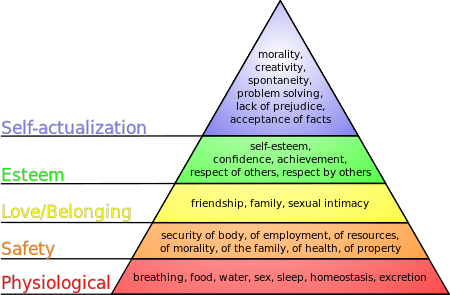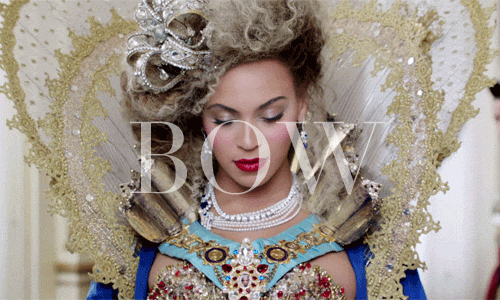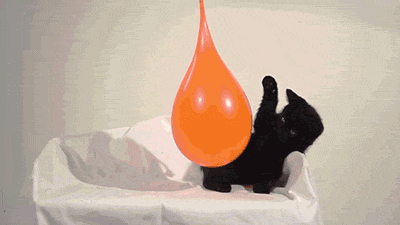Moving to a new and strange place can be daunting and overwhelming. Think back to when you first started College and reflect on how you felt. What were you worried about? For a lot of university students, the concerns about starting College remain the same regardless of which university you choose to attend - Will I fit in? Will I make friends? Do I belong here? Nancy Schlossberg (1989) studied transitions, "events of nonevents that alter our lives" such as moving to a new neighborhood, starting a new job or going to College, in relation to how they affected our feelings of marginality and mattering. Schlossberg found that people "in transition often feel marginal and that they do not matter... Every time an individual changes roles or experiences a transition, the potential for feeling marginal arises."
Why do you think that is?
When a person is in transition they are experiencing a disequilibrium between their old role and their new role. As Schlossberg notes "the more difference between the former role and the new role the more marginal a person may feel, especially if there are no norms for the new role." Perceiving oneself as not fitting in well, not making friends, feeling like no one cares about you and what you do, not believing yourself to be important etc, whether true or not, impacts a person's feeling of marginality. The less information known about our knew role, the more daunting and out of place a student may feel especially after leaving a familiar space - home town, high school, home country etc.
"Robert E. Park labeled the marginal person as 'one who is living and sharing intimately in the cultural life and traditions of two distinct peoples, never quite willing to break, even if permitted to do so, with past and traditions, and not quite accepted, because of prejudice, in the new society in which the individual seeks to find a place (Park, 1928, p.892)
Everyone feels out of place at particular points in time which allows us to develop and learn. However feeling out of place can make a student feel like the don't matter. Sociologist Morris Rosenberg and colleagues note that "mattering is a motive: a feeling that others depend on us, are interested in us, are concerned with our fate, or experience us as an ego extension [which] exercises a powerful influence on our actions (Rosenberg and McCullough, 1981, p.165 as cited in Schlossberg, 1989). Mattering is our belief, whether right or wrong, that we matter to someone else. A large part of the Resident Advisor job is supporting students who feel marginal and develop their belief that they matter. We do this is many different formats like community dinners, one on one discussions, learning every resident's name, sitting with residents in TAB and so on and so forth. Instinctively you may create situations to help bring marginal students into a wider community but you may not know you are in fact taking theory and putting it into practice. The five aspects of mattering that Schlossberg defines located below may be more familiar to you than you realize.
5 Aspects of Mattering
1. Attention
"'The most elementary form of mattering is the feeling that one commands the interest or notice of another person' (Rosenberg and McCullough, 1981, p.164)."
Have you said "Hello" to a resident passing you on the path? Have you sat with a student who was eating alone at lunch? Did you make an effort to learn the names of your residents? Did you make fancy door tags?
All of these are examples of actively giving attention to others which in turn signals to them that they matter to you. You are willing to make an effort to acknowledge their presence in the world and though it could be a simple 'hello Timmy' it could mean a great deal to someone feeling marginal.
2. Importance
"'To believe that the other person cares about what we want, think, and do, or is concerned with our fate, is to matter' (Rosenberg and McCullough, 1981, p.64)."
While giving attention is a good start the value and depth of attention makes a difference. If a person feels like a burden or a passing acknowledgement their feeling of importance can be lowered. Making sure to focus attention on residents in a meaningful manner create a greater sense of mattering. Ask them about classes, praise and encourage them in projects, ask their opinions about situations - show them you see them as important. Even expressing disappointment in uncompleted SHR's or attendance at events shows you are paying attention to and value their involvement.
3. Ego-extension
"...refers to the feeling that other people will be proud of our accomplishments or saddened by our failures."
Do you remember when you passed a difficult test, trial, interview etc. and your whole family celebrated like it was their success? You experienced Ego-extension Ego-extension is the idea that someone takes our success as their own and our failure as their own, signifying that what happens to us matters to them. Don't be afraid to celebrate huge achievements with your residents or honor events as if they were you own. By connecting yourself to their experiences you are reinforcing that you pay attention and displaying how important they are to you.
4. Dependence
"'Our behaviour is influenced by our dependence on other people is easily understood. What is... more mysterious is why our actions are equally governed by their dependence on us' (Rosenberg and McCullough, 1981, p.165)."
Dependence is not just a resident depending on you to aid them but the resident feels that others are depending on them. Involvement in activities where you are seen as a key role in the success of an event, program etc. can mean all the difference. If a resident is involved in a theatre production the cast and crew are depending on the resident attending in order for the production to function. This kind of dependence gives people a sense of purpose and they gain strength from the notion their presence is necessary and helpful.
5. Appreciation
Appreciation is hugely important and often overlooked. It's easy to congratulate someone who has exceeded expectations but how often do small achievements go unnoticed? Sure we all love straight A's and winning scholarships but not everyone is accomplishing huge things. Appreciation is the idea that you are recognized and thanked for what you do even if it is something you are expected to do. Praise a resident for completing their SHR, thank residents for taking time out of their day to attend house meetings. Just because it is required doesn't mean it can't be appreciated. You can never thank and appreciate people too much.
Understanding the theory of Marginality and Mattering can help us see behind our intuitive actions to the real theory that supports how and why we do what we do. Community dinner is more than just eating food together and talking to residents about classes is larger than preparing for registration. Creating a sense of mattering and belonging in a community allows residents to feel safe and supported.
"We are connected by the need to matter and the need to belong. The creation of environments that clearly indicate to all students that they matter will urge them to greater involvement... [making successful institutions] where students are motivated to learn, where their retention is high, where their institutional loyalty for the short- and long-term future is ensured (Schlossberg, Lynch and Chickering, 1989)."
Bibliography
Schlossberg, Nancy K. "Marginality and mattering: Key issues in building community."
New Directions for Student Services 1989.48 (1989): 5-15.















